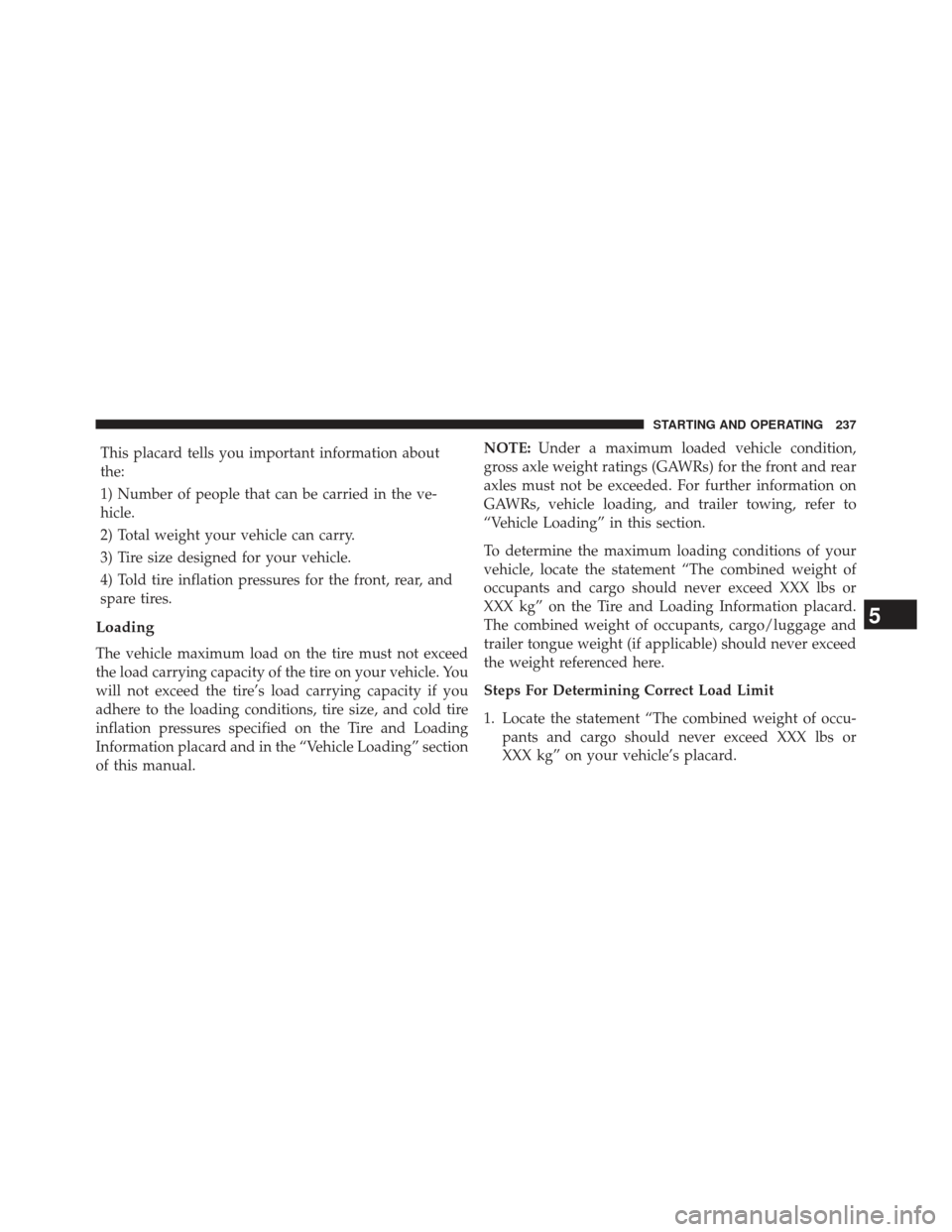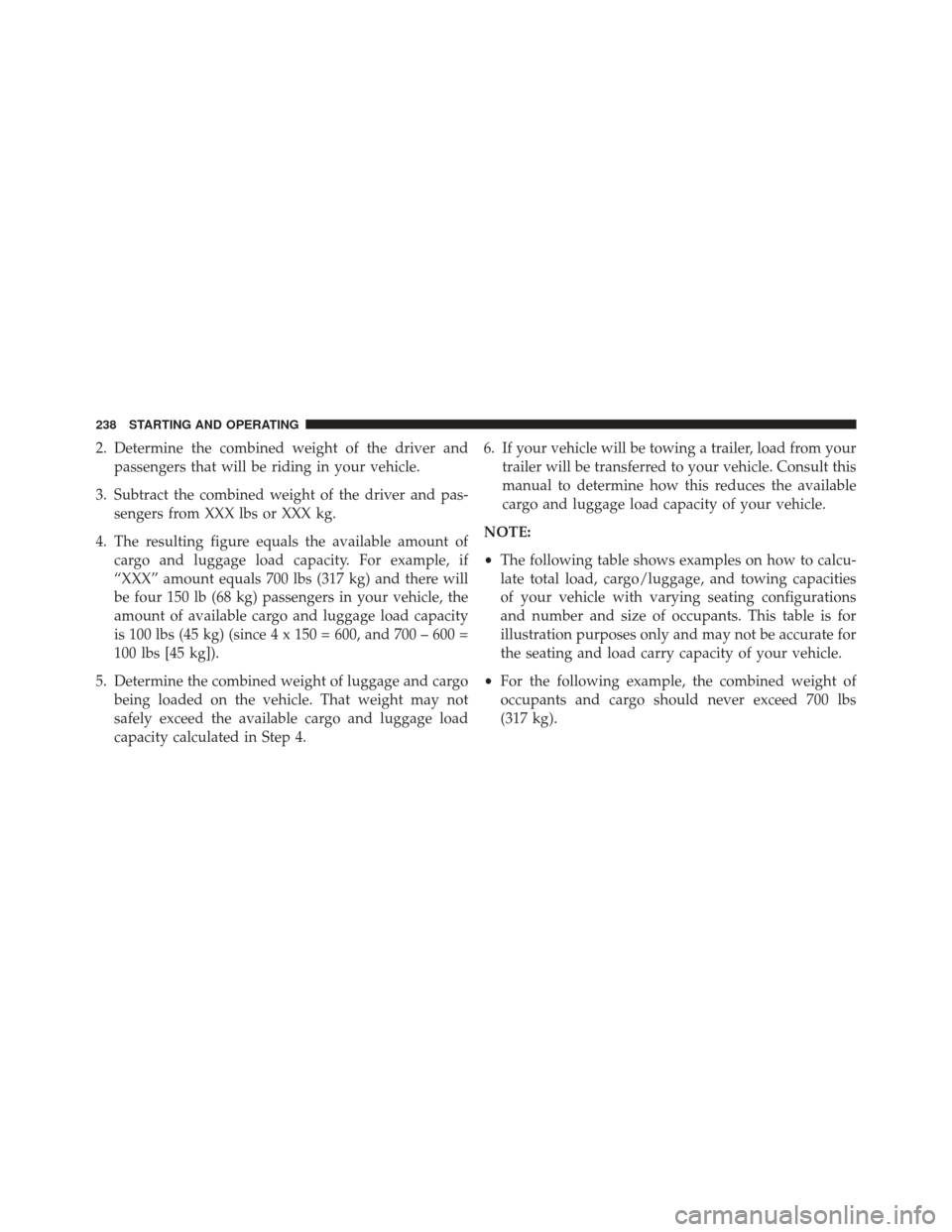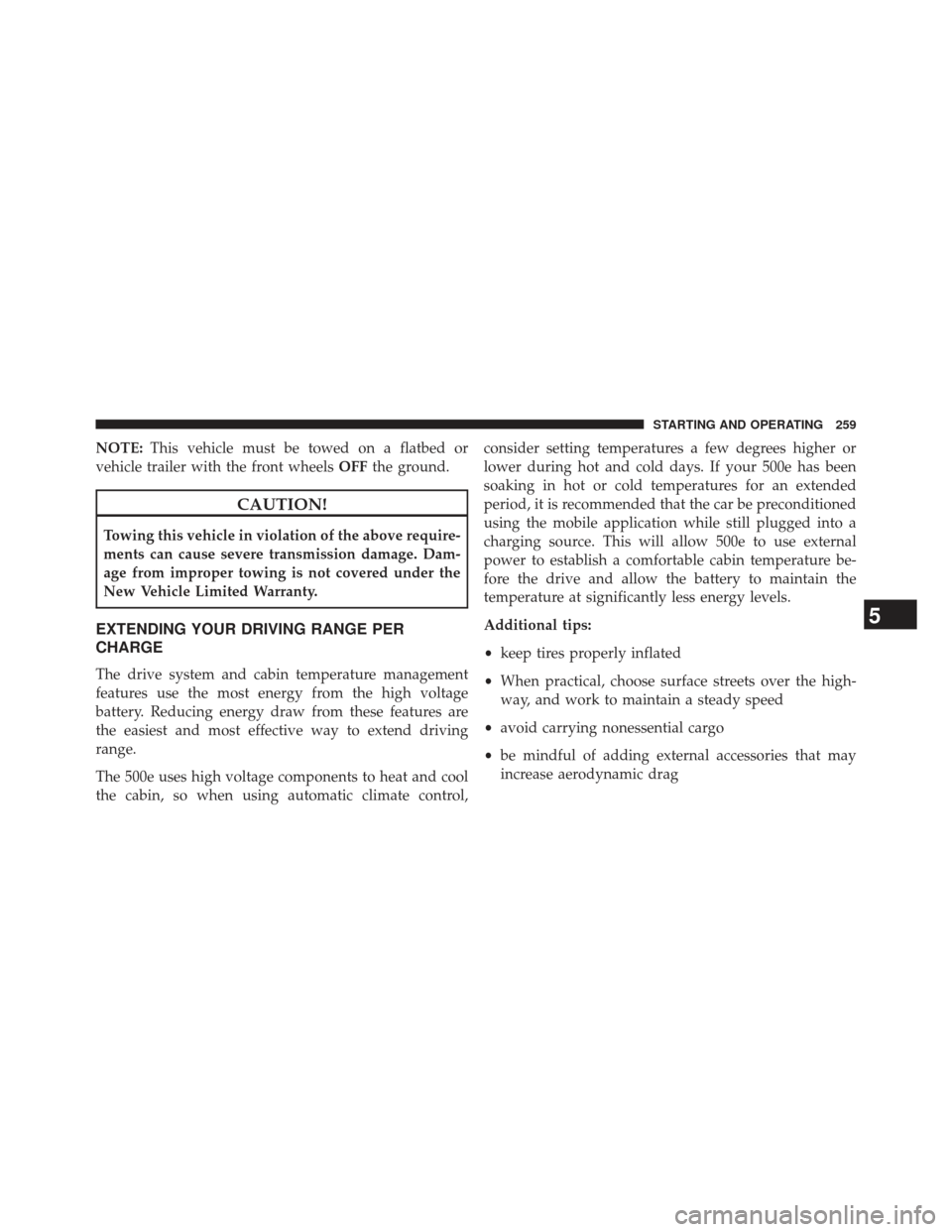Page 138 of 350

WARNING!(Continued)
•Before using ParkSense®, it is strongly recom-
mended that the ball mount and hitch ball assem-
bly is disconnected from the vehicle when the
vehicle is not used for towing. Failure to do so can
result in injury or damage to vehicles or obstacles
because the hitch ball will be much closer to the
obstacle than the rear fascia when the loudspeaker
sounds the continuous tone. Also, the sensors
could detect the ball mount and hitch ball assem-
bly, depending on its size and shape, giving a false
indication that an obstacle is behind the vehicle.
Failure Indications
A malfunction of the Rear Park Assist sensors or system
is indicated, during REVERSE engagement, by the instru-
ment panel warning icon. The warning icon is illuminated and a message
is displayed on the multifunction display (if
equipped). Refer to “Instrument Cluster De-
scriptions” in “Understanding Your Instrument
Panel” for further information.
The sensors and wiring are tested continuously when the
ignition is in the ON/RUN position. Failures are indi-
cated immediately if they occur when the system is ON.
Even if the system is able to identify that a specific sensor
is in failure condition, the instrument cluster display
shall indicate that the Rear Park Assist system is unavail-
able, without reference to the sensor in failure condition.
If even a single sensor fails, the entire system must be
disabled. The system is turned off automatically.
NOTE: The instrument cluster will NOT display any
message if the bumper sensors are dirty.
136 UNDERSTANDING THE FEATURES OF YOUR VEHICLE
Page 209 of 350
▫Premium TPM System ..................254
▫ Tire Pressure Monitoring Low Pressure
Warnings .......................... .254
▫ TPMS Warning ...................... .256
▫ General Information ....................258
� TRAILER TOWING .....................258
� RECREATIONAL TOWING (BEHIND
MOTORHOME, ETC.) ...................258 ▫
Towing This Vehicle Behind Another Vehicle . .258
� EXTENDING YOUR DRIVING RANGE PER
CHARGE ............................ .259
▫ Driver Behavior Gauge ..................260
▫ Range Projection ..................... .261
5
STARTING AND OPERATING 207
Page 217 of 350

CAUTION!
Towing the vehicle, coasting, or driving for any other
reason with the transmission in NEUTRAL can cause
severe transmission damage. Refer to “Recreational
Towing” in “Starting And Operating” and “Towing A
Disabled Vehicle” in “What To Do In Emergencies”
for further information.
DRIVE
Use this gear range for all city and highway driving.
Auto Park
The Auto Park features automatically places the trans-
mission into PARK if there is any indication that the
driver may leave the vehicle while the transmission is in
D (DRIVE), N (NEUTRAL) or R (REVERSE).Auto Park is enabled under the following conditions:
•
Key On (12 Volt ON and High Voltage OFF) or READY
mode (12 Volt ON and High Voltage ON).
• Vehicle speed is below 2 mph (3 km/h)
NOTE: Auto Park is disabled above 2 mph (3 km/h) and
transmission range will be maintained.
The instrument cluster will display an Auto shift to park
message and chime once when Auto Park action occurs.
Mode of operation with Key ON:
Auto Park will be engaged when the transmission is in
DRIVE, NEUTRAL or REVERSE and the following con-
ditions are detected:
• Seat Belt is unlatched
• Brake pedal is released
5
STARTING AND OPERATING 215
Page 239 of 350

This placard tells you important information about
the:
1) Number of people that can be carried in the ve-
hicle.
2) Total weight your vehicle can carry.
3) Tire size designed for your vehicle.
4) Told tire inflation pressures for the front, rear, and
spare tires.
Loading
The vehicle maximum load on the tire must not exceed
the load carrying capacity of the tire on your vehicle. You
will not exceed the tire’s load carrying capacity if you
adhere to the loading conditions, tire size, and cold tire
inflation pressures specified on the Tire and Loading
Information placard and in the “Vehicle Loading” section
of this manual.NOTE:
Under a maximum loaded vehicle condition,
gross axle weight ratings (GAWRs) for the front and rear
axles must not be exceeded. For further information on
GAWRs, vehicle loading, and trailer towing, refer to
“Vehicle Loading” in this section.
To determine the maximum loading conditions of your
vehicle, locate the statement “The combined weight of
occupants and cargo should never exceed XXX lbs or
XXX kg” on the Tire and Loading Information placard.
The combined weight of occupants, cargo/luggage and
trailer tongue weight (if applicable) should never exceed
the weight referenced here.
Steps For Determining Correct Load Limit
1. Locate the statement “The combined weight of occu- pants and cargo should never exceed XXX lbs or
XXX kg” on your vehicle’s placard.
5
STARTING AND OPERATING 237
Page 240 of 350

2. Determine the combined weight of the driver andpassengers that will be riding in your vehicle.
3. Subtract the combined weight of the driver and pas- sengers from XXX lbs or XXX kg.
4. The resulting figure equals the available amount of cargo and luggage load capacity. For example, if
“XXX” amount equals 700 lbs (317 kg) and there will
be four 150 lb (68 kg) passengers in your vehicle, the
amount of available cargo and luggage load capacity
is 100 lbs (45 kg) (since 4 x 150 = 600, and 700 – 600 =
100 lbs [45 kg]).
5. Determine the combined weight of luggage and cargo being loaded on the vehicle. That weight may not
safely exceed the available cargo and luggage load
capacity calculated in Step 4. 6. If your vehicle will be towing a trailer, load from your
trailer will be transferred to your vehicle. Consult this
manual to determine how this reduces the available
cargo and luggage load capacity of your vehicle.
NOTE:
• The following table shows examples on how to calcu-
late total load, cargo/luggage, and towing capacities
of your vehicle with varying seating configurations
and number and size of occupants. This table is for
illustration purposes only and may not be accurate for
the seating and load carry capacity of your vehicle.
• For the following example, the combined weight of
occupants and cargo should never exceed 700 lbs
(317 kg).
238 STARTING AND OPERATING
Page 260 of 350
General Information
This device complies with Part 15 of the FCC rules and
RSS 210 of Industry Canada. Operation is subject to the
following conditions:
•This device may not cause harmful interference. •
This device must accept any interference received,
including interference that may cause undesired op-
eration. The tire pressure sensors are covered under
one of the following licenses: United States
MRXC4W4MA4 Canada 2546A-C4W4MA4 1.
TRAILER TOWING
Trailer towing with this vehicle is not recommended.
RECREATIONAL TOWING (BEHIND MOTORHOME, ETC.)
Towing This Vehicle Behind Another Vehicle
Towing Condition Wheels OFF the Ground Single-Speed Transmission
Flat Tow NONENOT ALLOWED
Dolly Tow FrontOK
Rear NOT ALLOWED
On Trailer ALLOK
258 STARTING AND OPERATING
Page 261 of 350

NOTE:This vehicle must be towed on a flatbed or
vehicle trailer with the front wheels OFFthe ground.
CAUTION!
Towing this vehicle in violation of the above require-
ments can cause severe transmission damage. Dam-
age from improper towing is not covered under the
New Vehicle Limited Warranty.
EXTENDING YOUR DRIVING RANGE PER
CHARGE
The drive system and cabin temperature management
features use the most energy from the high voltage
battery. Reducing energy draw from these features are
the easiest and most effective way to extend driving
range.
The 500e uses high voltage components to heat and cool
the cabin, so when using automatic climate control, consider setting temperatures a few degrees higher or
lower during hot and cold days. If your 500e has been
soaking in hot or cold temperatures for an extended
period, it is recommended that the car be preconditioned
using the mobile application while still plugged into a
charging source. This will allow 500e to use external
power to establish a comfortable cabin temperature be-
fore the drive and allow the battery to maintain the
temperature at significantly less energy levels.
Additional tips:
•
keep tires properly inflated
• When practical, choose surface streets over the high-
way, and work to maintain a steady speed
• avoid carrying nonessential cargo
• be mindful of adding external accessories that may
increase aerodynamic drag
5
STARTING AND OPERATING 259
Page 265 of 350
WHAT TO DO IN EMERGENCIES
CONTENTS
�HAZARD WARNING FLASHERS ...........264
� TIREFIT KIT ......................... .264
▫ TIREFIT Storage ..................... .265
▫ TIREFIT Kit Components And Operation .....265
▫ TIREFIT Usage Precautions ...............266
▫ Sealing A Tire With TIREFIT ..............268
� JUMP-STARTING PROCEDURE (12 VOLT
BATTERY ONLY) ...................... .274▫
Preparations For Jump-Start ..............274
▫ Jump-Starting Procedure ................276
� FREEING A STUCK VEHICLE .............277
� MANUAL PARK RELEASE ................279
� TOWING A DISABLED VEHICLE ...........280
6